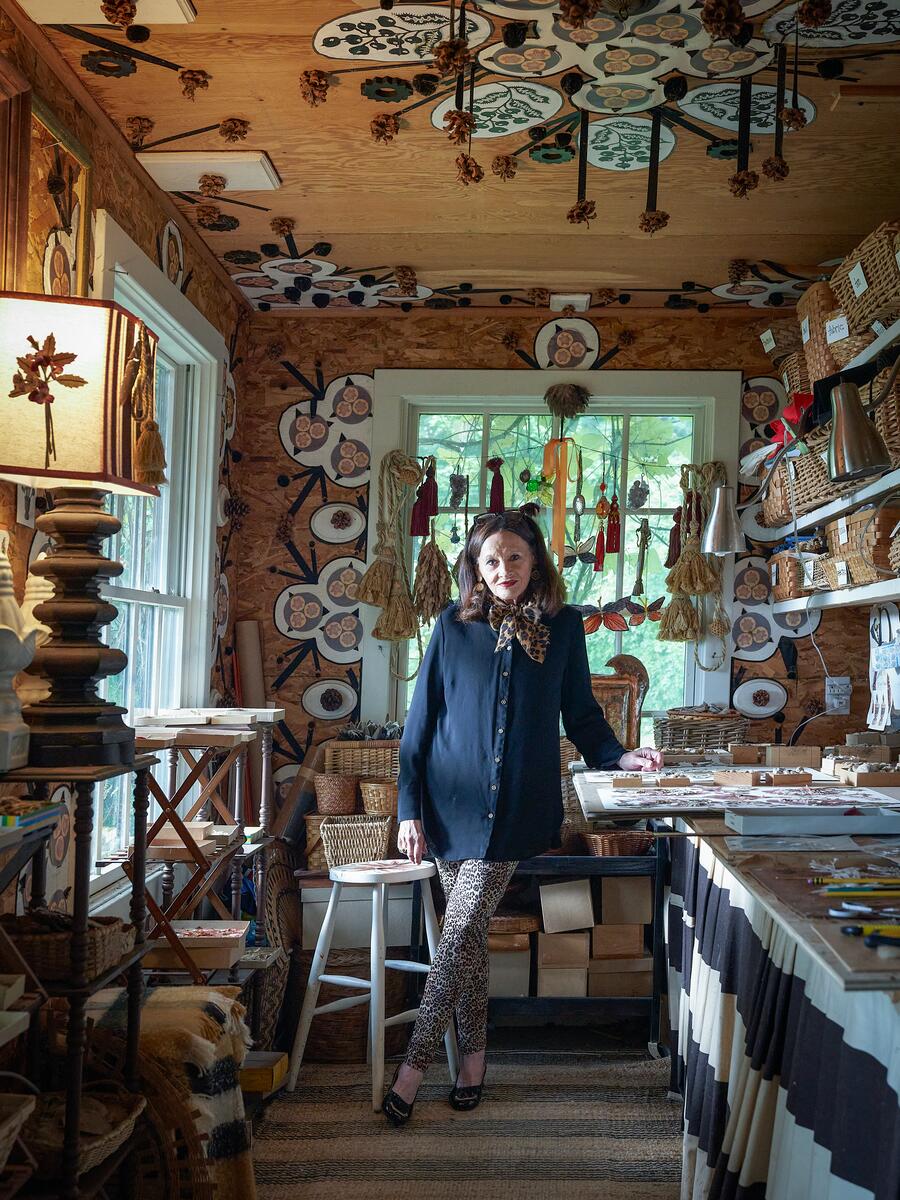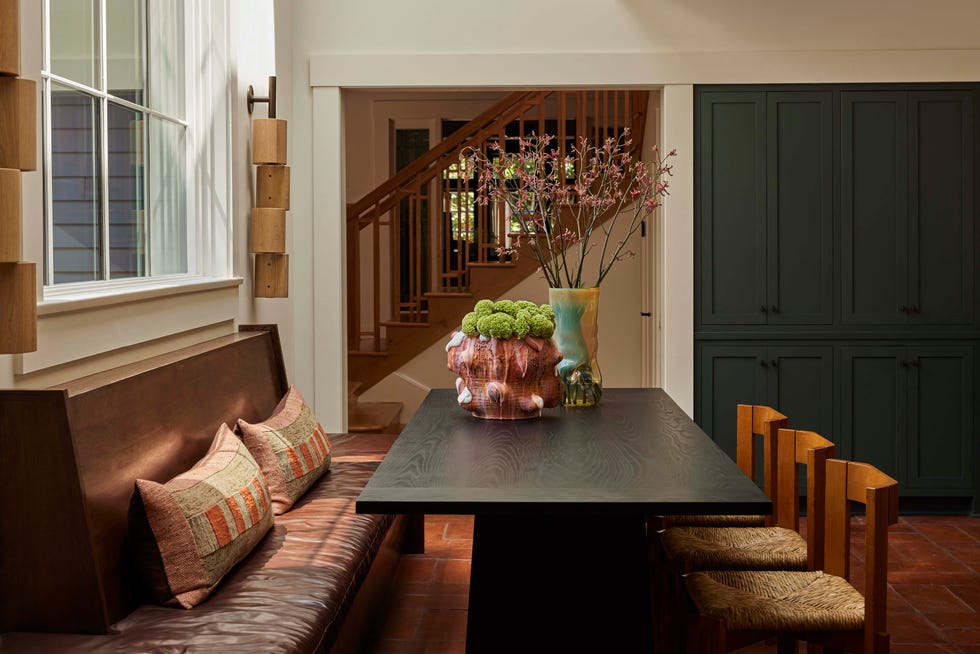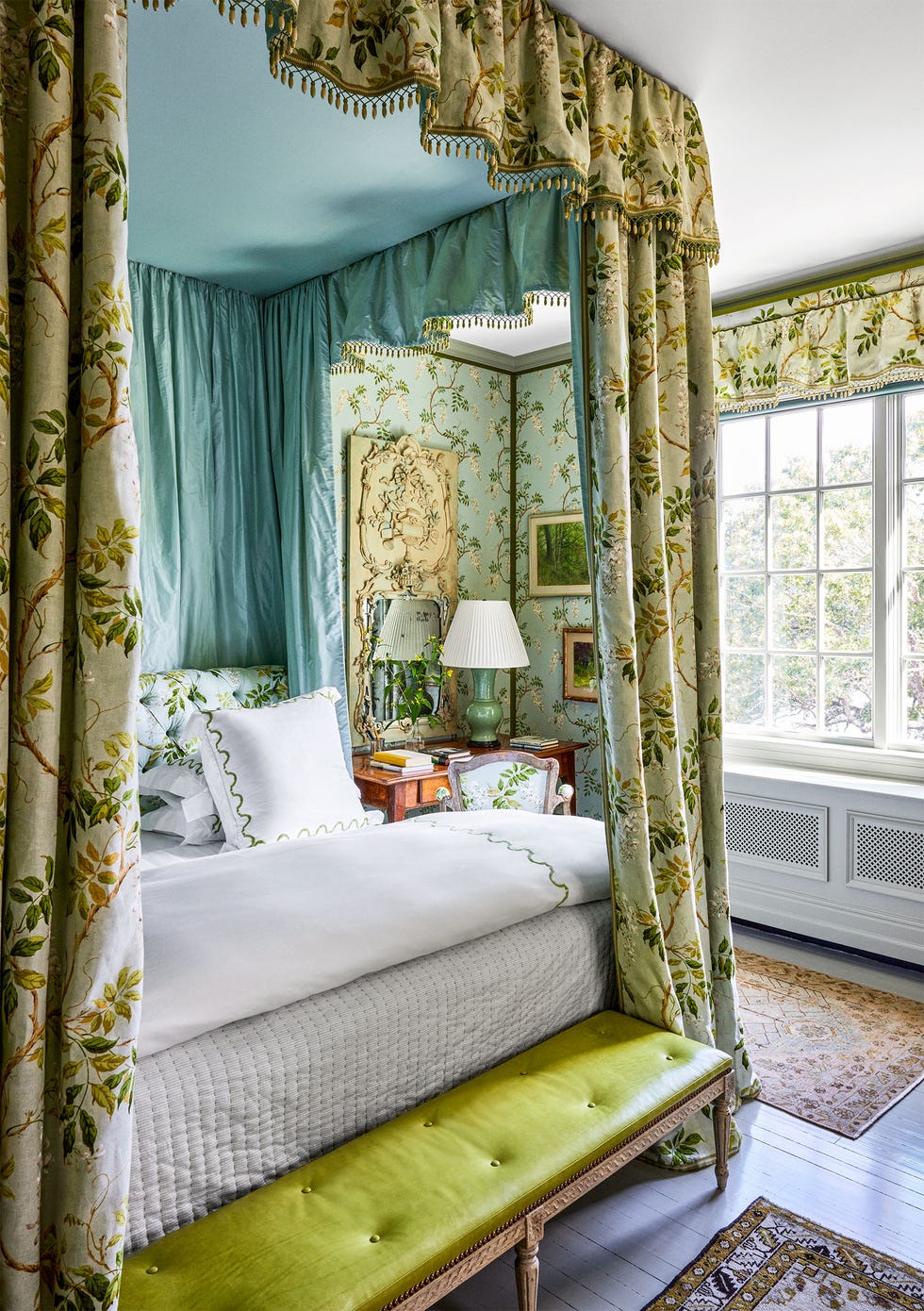Can a lick of paint change your life? According to multi-hyphenate tastemaker and creative Marian McEvoy, absolutely. With a penchant for doing things herself and firing up the glue gun for home décor projects, McEvoy decorates her home in upstate New York with a unique flair, and color being the primary ingredient.
When it came time to repaint the walls, a typical application simply would not suffice. Having worked as a fashion reporter, design writer, editor (she was the founding editor of this magazine and led it to prominence throughout the 1990s), and most recently, as an artist exhibiting her work at KRB NYC, McEvoy approaches the seemingly banal task of house painting with a fresh perspective and innovative joie de vivre. The result is a honed and layered signature look core to her style DNA.
Color Block O’Clock
If the thought of repainting feels daunting, Marian believes, “You don’t have to paint the whole room to change it.” Instead, she paints color blocks onto the walls throughout each of her rooms, something that can easily be done on a weekend with a plan and a little determination. These color fields help define the structure of walls that might not have a lot of architectural molding. Having been privy to some of the most prominent interiors, McEvoy recalls having spent time in Thomas Jayne’s (of ELLE DÉCOR A-List interior design firm Jayne Design Studio) SoHo New York loft. Here, Jayne utilized blocks of color to help visually break up the long, open space. Naturally, McEvoy was inspired by the apartment and brought the idea back to her own smaller scale home and adapted the concept to suit her needs.
Trim It Out
To make color blocking your walls personal to you, McEvoy recommends using trim around each block. She chuckles, “I’m a big glue gun person and like to use ribbons, trims and fabric remnants and stick them onto the wall to make outlines.” She uses contrasting colors for these borders and trimmings, which tend to pop up in other places––adorned to lampshades, on table skirts, sewn as leading edges on her curtains and even used on the wall in place of baseboards. Using trim in unexpected ways add a joyful, fun nature to the decoration of her home.
Limit the Palette
McEvoy prefers logically arranged spaces and recommends limiting the palette of each room: “I do not veer off my chosen palette.” While her staircase is layered and chock-full of art and antiques, a limited color palette of black, white and red keeps the transitional space cohesive. Maintaining a simple palette of two or three colors helps keep the endless choices from feeling daunting and ensures each space has a clear color aesthetic without too many competing elements. McEvoy notes, “I prefer two contrasting colors against an off-white background.” But, she continues, “I don’t like snow white. It’s not flattering. I prefer a Navajo white, which is very livable, softer and warm.”
Mix It Yourself
It’s no surprise that McEvoy prefers to mix her own colors. Often she uses art store paints and a brush to apply. Water-based paints with a matte and chalky finish for the walls, and a low shine satin oil-based paint on the trim and baseboards, so they can be easily scrubbed. When it comes to paint, thinking about how one lives and how one will keep up each room is an important consideration as well. “Maintenance,” she notes, “is so important. If you have an organized and clean house, it makes all the difference.”
Go Beyond
Painting your walls is one way to change your room seasonally, but swapping out a lampshade or two can have a similar effect. Marian uses the same paints from her wall projects on plain vellum paper lampshades to make easy updates to her rooms. While she favors decorative botanical motifs, the sky is the limit when it comes to adding artistry to your space. McEvoy recommends embracing natural and natural motifs and bringing the outdoors in.









